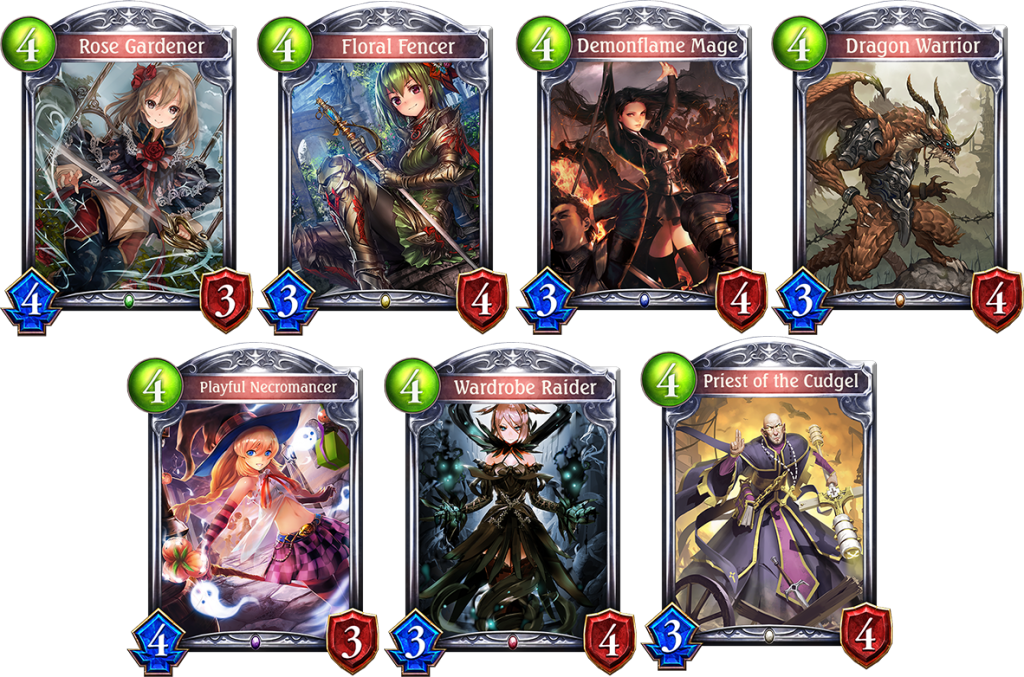Know Your Tempo: Part 2

In the latter half of this two-part article, we continue our discussion of how to gain board control and explain tempo further with specific examples.
How to Gain Tempo Advantage
Choosing followers is an extremely important step when considering tempo. There are three types of 3-cost followers: 3/2 followers, 2/3 followers, and a few unique cards. A 3/2 can take out a higher cost follower to gain tempo and provide great potential for efficient play point use. However, there is also the risk of being taken out by a lower cost follower, causing you to lose tempo. Conversely, a 2/3 can easily take out a low-cost follower, but does not stand a chance against a high-cost one. Carefully consider what your deck needs. Pay close attention to how efficient or inefficient your cards are with respect to their play point cost.
Followers with Storm generally have low statistics, but the immediate effect they offer is indispensable for gaining board control. Normally, a follower has to be evolved in order to attack on the same turn, but followers with Storm are the exception. This can limit the opponent’s options because they will lose board control unless they also have followers with Storm or they evolve a follower. Followers such as Moon Al-mi’raj and Alucard have amazing potential and can turn a game around for you. They can also be used as a closer to finish off the opponent, so I highly recommend including these cards in your deck.
Removal Spells (spells that deal damage or destroy followers) can affect the board immediately just like followers with Storm. Removal spells such as Crimson Purge and Call of the Void. It depends on the situation, but successfully using a spell to remove a high-cost and powerful follower is usually a game-winning play.
Unlike followers, removal spells can only be used to remove followers (with a few exceptions). Followers can be used to remove other followers or to attack the enemy leader, so generally it’s a good idea to have more followers than removal spells.
On the other hand, the cost of removal spells is usually on the lower end to account for their situational use. They have the potential to turn a game around for you, so it can be a good idea to include more removal spells in certain kinds of decks.
How to Regain Board Control
What should you do if you lose board control to your opponent?
Although it may be difficult to accomplish, you need to make plays that prevent the opponent from developing their area any further.
Here are a few ways to accomplish this goal:
Use cards with immediate effects (cards with Fanfare, followers with Storm, removal spells)
Use an Evolution (if you go second)
With the former, the goal is to neutralize threats before they can affect the board. Using low-cost cards such as Blazing Breath or Diabolic Drain to deal with high-cost cards can also help you regain board control. For those of you who have a hard time with board control, I recommend experimenting by adding cards with immediate effects to your deck.
For the latter, players who go second can use evolution, which is a system designed to help with board control. You get one more evolution and can evolve one turn earlier than the player who goes first, giving you a chance to take board control.
If you have the followers from Chapter 6 of the main story unlocked, they can wreak more havoc than some higher-cost followers.

Acquire these followers by playing the main story.
If you lose control of the board, making an immediate comeback would be ideal, but clearing the board of enemy followers to buy yourself time is another option. As I stated at the beginning of this two-part article, maintaining a high defense can prevent a potentially fatal outcome from your opponent’s ace, so it’s important to deny enemy followers the chance to attack your leader.
I believe a truly skilled player is one who doesn’t give up, and pulls off a comeback from a seemingly hopeless situation.
Summary
Utilize cards that can help you maintain your advantage or turn the tide in your favor!





















